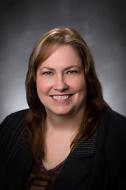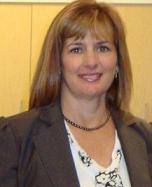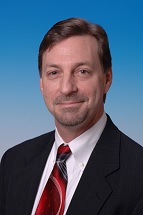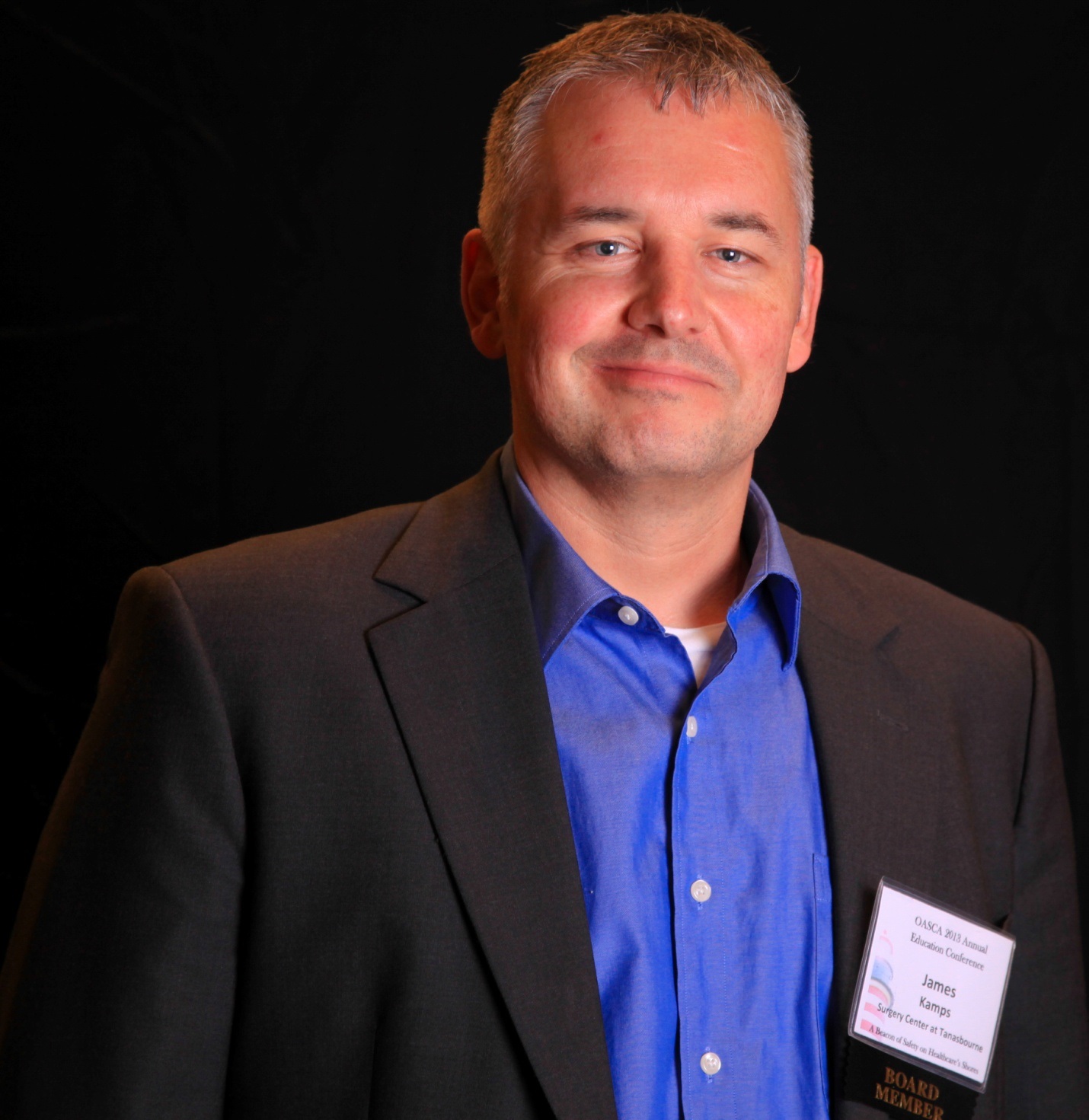Eight ambulatory surgery center administrators discuss where growth may still be possible for their centers next year and their initiatives going forward.
Q: What will be the largest barrier to ambulatory surgery center growth 2014?
 Regina Robinson, RN, MBA, CASC, Toledo (Ohio) Outpatient Surgery Center: Our biggest barrier is getting paid for the services rendered. I have found over the past year it is more common to see higher deductible plans and the patient has become more responsible for the charges. Each day is unique and not one answer is common for all the various types of insurances.
Regina Robinson, RN, MBA, CASC, Toledo (Ohio) Outpatient Surgery Center: Our biggest barrier is getting paid for the services rendered. I have found over the past year it is more common to see higher deductible plans and the patient has become more responsible for the charges. Each day is unique and not one answer is common for all the various types of insurances.
Judy Harless, MBA, CASC, SMI Surgery Center (San Diego): Unfortunately, the largest barrier to growth continues to be the failure of the state and federal government to recognize the importance of ASCs in the healthcare delivery system, leading to legislation and rulings which continually impede our ability to realize our full potential.
the state and federal government to recognize the importance of ASCs in the healthcare delivery system, leading to legislation and rulings which continually impede our ability to realize our full potential.
The growing disparity in ASC vs. HOPD reimbursement, SB863 (California's Work Comp Reform Bill, decreasing ASC reimbursement by 35 to 40 percent) and the uncertain impact of the Affordable Care Act, threaten our short- and long-term sustainability.
 Bill Hazen, Surgery Center at Pelham (Greer, S.C.): Hospital acquisition of physicians, working with all independent physicians, will be a huge challenge and may force centers to downsize to survive.
Bill Hazen, Surgery Center at Pelham (Greer, S.C.): Hospital acquisition of physicians, working with all independent physicians, will be a huge challenge and may force centers to downsize to survive.
Casey McFarland, MHA, Georgia Endoscopy Center (Alpharetta): With the PPACA the ASC industry will see some new insurance policy changes or restrictions. Already in 2013 we are finding patient policies that have smaller benefit maximums, restrictive screening benefits and/or those that are not grandfathered into the ACA. These policy changes are important to catch at the pre-operative verification process as they can result in a higher patient out-of-pocket or payment delays.
changes or restrictions. Already in 2013 we are finding patient policies that have smaller benefit maximums, restrictive screening benefits and/or those that are not grandfathered into the ACA. These policy changes are important to catch at the pre-operative verification process as they can result in a higher patient out-of-pocket or payment delays.
The ASC should spend the time calling the insurance company to verify the patient's benefits not only to ensure timely payment on claims but to provide a higher level of customer service by educating patient to their benefits and out-of-pocket amounts before the procedure. No patient wants to be surprised a month after their procedure with a bill they were not expecting.
Tim Shannon, Northridge Surgery Center (Madison, Tenn.): Low patient engagement and physician participation have been the largest barriers for patient growth in an ASC. Up until now the patient has followed the lead of the physician as to where to have outpatient surgery with little or no thought on the financial impact. The greatest challenge has been to bring the physician on board through education of how the ASC can benefit both them and their patients.
Q: Is anyone having difficulty interacting with payers or developing managed care contracts in their region?
 Douglas Lutz, MBA, Lafayette (La.) Surgicare: As a result of a sluggish economy healthcare costs are increasingly shifting from employers to employees and individuals are finding they are bearing more and more of the cost of their healthcare every year. I believe the healthcare legislation and insurance marketplace will expedite the changing landscape of who pays for healthcare and individuals will continue to bear more of the burden for healthcare coverage.
Douglas Lutz, MBA, Lafayette (La.) Surgicare: As a result of a sluggish economy healthcare costs are increasingly shifting from employers to employees and individuals are finding they are bearing more and more of the cost of their healthcare every year. I believe the healthcare legislation and insurance marketplace will expedite the changing landscape of who pays for healthcare and individuals will continue to bear more of the burden for healthcare coverage.
James Kamps, RN, MBA, CNOR, Surgery Center at Tanasbourne (Hillsboro, Ore.): In Oregon, we have been moving down the path of managed care for some time now. The state has set up many Community Care Organizations. The majority of these CCOs are run by large hospitals. I feel that this could cause a significant reduction in case volume to many of the centers in Oregon.
managed care for some time now. The state has set up many Community Care Organizations. The majority of these CCOs are run by large hospitals. I feel that this could cause a significant reduction in case volume to many of the centers in Oregon.
I believe that the best way to address this issue is through the ASC organizations. By supporting our state and national ASC organizations and political action committees, we can be collectively a larger voice and be more effective in letting the individuals running the CCOs what surgery centers offer in terms of care and patient outcomes.
Q: Do any of these changes in healthcare present an opportunity for ASCs to succeed?
CM: Besides adding physicians to the practice, our facility's greatest opportunity for growth in 2014 is the increased number of insured patients under the Patient Protection and Affordable Care Act. Whether young or older, patients suffering from gastrointestinal problems or those needing screening a colonoscopy who will have coverage in 2014 will be more likely to seek care. This demand will increase the number of patients being seen in the gastroenterologist's office which in turn will provide growth to the facility performing the procedures.
TS: With the recent changes in healthcare insurance a large number of patients are beginning to experience the potential challenges of higher deductibles and co-pays. This will result in the need for patients to play a more active role in where and when to pursue healthcare needs.
The ASC environment has proven to provide excellent healthcare quality and service at the same level if not better than the hospitals. We focus solely on the ambulatory surgery patient without the distractions of emergent and sick patients. We are also able to do this with a lower overhead resulting in better pricing for our patients. I anticipate a continued increase in movement of patients to the ASC environment as this information is brought to the forefront of the paying customer.
Q: How are you and your center planning to overcome these barriers next year?
RR: With the daily changes occurring in the near future, we plan to try and continue to collect as much money upfront as possible. This takes assertive verification of the insurances and informing patients of their financial obligations, while meeting our own contractual obligations.
JH: Given that we are the best kept secret in healthcare, I seize as many opportunities as possible to be an advocate for the industry. I am optimistic that by educating legislators via facility tours and ASCA's D.C. Fly-Ins, our voices will eventually not only be heard, but valued, resulting in a paradigm shift to greater utilization and increased reimbursement.
TS: We provide faster turnover times between surgeries and enable the physician to return to their home or office in a more efficient manner. I believe communicating this message to the physician is both a challenge and opportunity to increase growth in the ASC industry.
DL: While this presents a great opportunity for ASCs with regard to being a lower out-of-pocket cost option for consumers it also presents revenue challenges for our industry. With the rise of individual deductibles and coinsurance, collecting revenues will be more difficult than in years past and could prove to be a significant issue for ASCs in the near future.
Q: Do you plan to expand your surgery center's service lines in 2014?
RR: Our biggest opportunity for growth is expanding the types of services we perform. We currently perform GI, eyes, GYN, ENT, pain, orthopedics, plastics, urology and podiatry.
We are going to include neurosurgeons for spine cases, which will include micro discectomy and anterior cervical cases. This will provide a comfortable, quality-focused and safe environment for our patients. This has become more common in the community to utilize an ASC for these types of surgeries and especially since the patients like going to their home soon after surgery.
BH: The biggest area for growth will be in the hemi-knee and possible total joint arena. We are working with home health agencies and insurance companies.
Jim Sigler, Casper (Wyo.) Surgical Center: We have decided to expand our facility to allow for 23-hour stays. We needed to create an avenue for our surgeons to expand what they were currently doing at the center. Allowing for additional patients through overnight stay capabilities is a good option for us.
Q: Are there any other initiatives you think will really make an impact on patient volume next year?
JK: I believe that the largest opportunity for growth in surgery centers is to communicate directly with primary care providers. Many PCP groups in my area are well informed about the cost savings that a surgery center can pass on to their patients.
But, in my experience many PCP groups do not know that surgery centers also have great patient satisfaction scores, infection rates and excellent patient outcomes. By communicating these facts to the PCP groups I ensure them that their patient will have the best care and a great surgical experience.
JS: We are also focusing on continued improvement in our service to our doctors. We work to keep turnover times low, keep equipment in good shape, always upgrading when advantageous and maintain regular communication to anticipate problem areas.
We have also been working on greater communication to the community through advertising and a partnership with the city of Casper for better visibility. We have produced a video that will be on the city's website. We will continue to focus on high quality patient care and work at positioning ourselves in the community as the best low cost option in Casper.
DL: ASCs have long been progressive when it comes to efficiency and cost containment and it is now time for the general public to be made more aware of the quality of care they receive from an ASC and how it can be comparable, if not exceed, the standards of care received in hospitals performing the same types of procedures.
With quality-based payment systems well on their way to becoming reality in healthcare providers and administrators must work together in changing old habits and embracing the opportunities for quality improvement within our facilities.
More Articles on ASC Issues:
Cash Pay Surgery Centers: A Trend for the Future?
5 Strategies for ASC Physician Recruitment Next Year
5 Tips to Improve Hiring, Retaining Employees
Q: What will be the largest barrier to ambulatory surgery center growth 2014?
 Regina Robinson, RN, MBA, CASC, Toledo (Ohio) Outpatient Surgery Center: Our biggest barrier is getting paid for the services rendered. I have found over the past year it is more common to see higher deductible plans and the patient has become more responsible for the charges. Each day is unique and not one answer is common for all the various types of insurances.
Regina Robinson, RN, MBA, CASC, Toledo (Ohio) Outpatient Surgery Center: Our biggest barrier is getting paid for the services rendered. I have found over the past year it is more common to see higher deductible plans and the patient has become more responsible for the charges. Each day is unique and not one answer is common for all the various types of insurances. Judy Harless, MBA, CASC, SMI Surgery Center (San Diego): Unfortunately, the largest barrier to growth continues to be the failure of
 the state and federal government to recognize the importance of ASCs in the healthcare delivery system, leading to legislation and rulings which continually impede our ability to realize our full potential.
the state and federal government to recognize the importance of ASCs in the healthcare delivery system, leading to legislation and rulings which continually impede our ability to realize our full potential. The growing disparity in ASC vs. HOPD reimbursement, SB863 (California's Work Comp Reform Bill, decreasing ASC reimbursement by 35 to 40 percent) and the uncertain impact of the Affordable Care Act, threaten our short- and long-term sustainability.
 Bill Hazen, Surgery Center at Pelham (Greer, S.C.): Hospital acquisition of physicians, working with all independent physicians, will be a huge challenge and may force centers to downsize to survive.
Bill Hazen, Surgery Center at Pelham (Greer, S.C.): Hospital acquisition of physicians, working with all independent physicians, will be a huge challenge and may force centers to downsize to survive.Casey McFarland, MHA, Georgia Endoscopy Center (Alpharetta): With the PPACA the ASC industry will see some new insurance policy
 changes or restrictions. Already in 2013 we are finding patient policies that have smaller benefit maximums, restrictive screening benefits and/or those that are not grandfathered into the ACA. These policy changes are important to catch at the pre-operative verification process as they can result in a higher patient out-of-pocket or payment delays.
changes or restrictions. Already in 2013 we are finding patient policies that have smaller benefit maximums, restrictive screening benefits and/or those that are not grandfathered into the ACA. These policy changes are important to catch at the pre-operative verification process as they can result in a higher patient out-of-pocket or payment delays. The ASC should spend the time calling the insurance company to verify the patient's benefits not only to ensure timely payment on claims but to provide a higher level of customer service by educating patient to their benefits and out-of-pocket amounts before the procedure. No patient wants to be surprised a month after their procedure with a bill they were not expecting.
Tim Shannon, Northridge Surgery Center (Madison, Tenn.): Low patient engagement and physician participation have been the largest barriers for patient growth in an ASC. Up until now the patient has followed the lead of the physician as to where to have outpatient surgery with little or no thought on the financial impact. The greatest challenge has been to bring the physician on board through education of how the ASC can benefit both them and their patients.
Q: Is anyone having difficulty interacting with payers or developing managed care contracts in their region?
 Douglas Lutz, MBA, Lafayette (La.) Surgicare: As a result of a sluggish economy healthcare costs are increasingly shifting from employers to employees and individuals are finding they are bearing more and more of the cost of their healthcare every year. I believe the healthcare legislation and insurance marketplace will expedite the changing landscape of who pays for healthcare and individuals will continue to bear more of the burden for healthcare coverage.
Douglas Lutz, MBA, Lafayette (La.) Surgicare: As a result of a sluggish economy healthcare costs are increasingly shifting from employers to employees and individuals are finding they are bearing more and more of the cost of their healthcare every year. I believe the healthcare legislation and insurance marketplace will expedite the changing landscape of who pays for healthcare and individuals will continue to bear more of the burden for healthcare coverage. James Kamps, RN, MBA, CNOR, Surgery Center at Tanasbourne (Hillsboro, Ore.): In Oregon, we have been moving down the path of
 managed care for some time now. The state has set up many Community Care Organizations. The majority of these CCOs are run by large hospitals. I feel that this could cause a significant reduction in case volume to many of the centers in Oregon.
managed care for some time now. The state has set up many Community Care Organizations. The majority of these CCOs are run by large hospitals. I feel that this could cause a significant reduction in case volume to many of the centers in Oregon. I believe that the best way to address this issue is through the ASC organizations. By supporting our state and national ASC organizations and political action committees, we can be collectively a larger voice and be more effective in letting the individuals running the CCOs what surgery centers offer in terms of care and patient outcomes.
Q: Do any of these changes in healthcare present an opportunity for ASCs to succeed?
CM: Besides adding physicians to the practice, our facility's greatest opportunity for growth in 2014 is the increased number of insured patients under the Patient Protection and Affordable Care Act. Whether young or older, patients suffering from gastrointestinal problems or those needing screening a colonoscopy who will have coverage in 2014 will be more likely to seek care. This demand will increase the number of patients being seen in the gastroenterologist's office which in turn will provide growth to the facility performing the procedures.
TS: With the recent changes in healthcare insurance a large number of patients are beginning to experience the potential challenges of higher deductibles and co-pays. This will result in the need for patients to play a more active role in where and when to pursue healthcare needs.
The ASC environment has proven to provide excellent healthcare quality and service at the same level if not better than the hospitals. We focus solely on the ambulatory surgery patient without the distractions of emergent and sick patients. We are also able to do this with a lower overhead resulting in better pricing for our patients. I anticipate a continued increase in movement of patients to the ASC environment as this information is brought to the forefront of the paying customer.
Q: How are you and your center planning to overcome these barriers next year?
RR: With the daily changes occurring in the near future, we plan to try and continue to collect as much money upfront as possible. This takes assertive verification of the insurances and informing patients of their financial obligations, while meeting our own contractual obligations.
JH: Given that we are the best kept secret in healthcare, I seize as many opportunities as possible to be an advocate for the industry. I am optimistic that by educating legislators via facility tours and ASCA's D.C. Fly-Ins, our voices will eventually not only be heard, but valued, resulting in a paradigm shift to greater utilization and increased reimbursement.
TS: We provide faster turnover times between surgeries and enable the physician to return to their home or office in a more efficient manner. I believe communicating this message to the physician is both a challenge and opportunity to increase growth in the ASC industry.
DL: While this presents a great opportunity for ASCs with regard to being a lower out-of-pocket cost option for consumers it also presents revenue challenges for our industry. With the rise of individual deductibles and coinsurance, collecting revenues will be more difficult than in years past and could prove to be a significant issue for ASCs in the near future.
Q: Do you plan to expand your surgery center's service lines in 2014?
RR: Our biggest opportunity for growth is expanding the types of services we perform. We currently perform GI, eyes, GYN, ENT, pain, orthopedics, plastics, urology and podiatry.
We are going to include neurosurgeons for spine cases, which will include micro discectomy and anterior cervical cases. This will provide a comfortable, quality-focused and safe environment for our patients. This has become more common in the community to utilize an ASC for these types of surgeries and especially since the patients like going to their home soon after surgery.
BH: The biggest area for growth will be in the hemi-knee and possible total joint arena. We are working with home health agencies and insurance companies.
Jim Sigler, Casper (Wyo.) Surgical Center: We have decided to expand our facility to allow for 23-hour stays. We needed to create an avenue for our surgeons to expand what they were currently doing at the center. Allowing for additional patients through overnight stay capabilities is a good option for us.
Q: Are there any other initiatives you think will really make an impact on patient volume next year?
JK: I believe that the largest opportunity for growth in surgery centers is to communicate directly with primary care providers. Many PCP groups in my area are well informed about the cost savings that a surgery center can pass on to their patients.
But, in my experience many PCP groups do not know that surgery centers also have great patient satisfaction scores, infection rates and excellent patient outcomes. By communicating these facts to the PCP groups I ensure them that their patient will have the best care and a great surgical experience.
JS: We are also focusing on continued improvement in our service to our doctors. We work to keep turnover times low, keep equipment in good shape, always upgrading when advantageous and maintain regular communication to anticipate problem areas.
We have also been working on greater communication to the community through advertising and a partnership with the city of Casper for better visibility. We have produced a video that will be on the city's website. We will continue to focus on high quality patient care and work at positioning ourselves in the community as the best low cost option in Casper.
DL: ASCs have long been progressive when it comes to efficiency and cost containment and it is now time for the general public to be made more aware of the quality of care they receive from an ASC and how it can be comparable, if not exceed, the standards of care received in hospitals performing the same types of procedures.
With quality-based payment systems well on their way to becoming reality in healthcare providers and administrators must work together in changing old habits and embracing the opportunities for quality improvement within our facilities.
More Articles on ASC Issues:
Cash Pay Surgery Centers: A Trend for the Future?
5 Strategies for ASC Physician Recruitment Next Year
5 Tips to Improve Hiring, Retaining Employees

